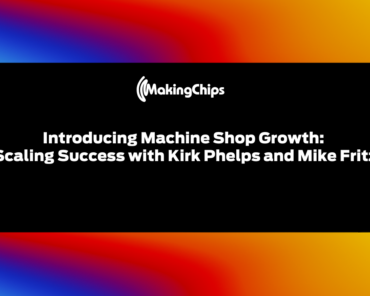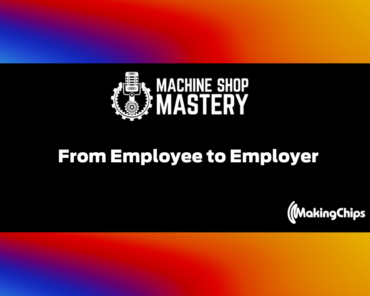By Joel Miller
MC044 – Task Management For Manufacturing Leaders
Podcast: Play in new window | Download
Episode 44 of MakingChips is inspired by Matthew Feight of Miller Welding. He writes:
I should start by saying that I am a Plant Manager for contract manufacturer in central Pennsylvania. We have approximately 400 employees within our 3 locations and are a contract manufacturer of fabricated metal products with capabilities in cutting, bending, welding, machining & painting. I was just referred to your podcasts yesterday by the President of our Company. I have listened to several of your episodes, a couple of your first, and a few of the more recent. One that I took particular interest in was the one regarding Business Management Tools for Manufacturing Leaders. I believe it was Jim who stated that he uses Evernote quite extensively and I would definitely like to hear more on how. I have been using Evernote for some time but do not feel I use it to its potential and would be interested on how Jim uses it to manage his time and tasks. Any input would be greatly appreciated. I am looking forward to listening to more of your podcasts.
Sincerely,
Matt
From Jason:
Matt,
Thank you for reaching out to us. The funny thing is that Jim did not mentioned this…it was me (Jason)…so, either we sound the same or we are always talking over each other (most likely). I hope that you enjoy this episode.
Jason
Show Notes:
Everybody has a different way to manage getting things done. For some people, it can be as simple as using an “old school” paper planner. For others, they may prefer organizing their tasks into various software programs. The most important thing is to use one system, and stick to it. Using multiple systems of management can be a tough habit to break. Figuring out a way to transition to one form of task management can do wonders for increasing productivity, and simplifying your life.
In this episode of MakingChips, Jason shares his knowledge of task management that stems from one of the most popular business books ever written, “Getting Things Done” by David Allen. The main premise of the book is relatively simple to grasp, “Get your tasks out of your head, and don’t touch them multiple times.” Jason shares a quote from his father that captures this concept perfectly.
“Don’t open your mail unless you are going to deal with it now and get rid of it.”
Later in the episode, Jason explains (in great detail) how he uses the business application, “Evernote” to manage his to-do lists, tasks, and projects.
“The Basics of Getting Things Done”
- “Clearing Your To-Do List”
- This will help you gain peace of mind and focus on what tasks are most important (New Job, New Quote, New Hire, Increasing Productivity, etc.)
- “Creating an Inbox of To-Do’s and Projects
- “Weekly Review”
- It’s important to spend a short amount of time every week to review your to-do’s and projects.
- Put them into context so you can tackle in a more productive manner. (Who, Where, and When)
“8 Different Ways to Organize Tasks”
- Single Step Task Items
- Can Be Completed in Under 2 Minutes
- Trash
- Reference Filing System
- Task to Create a Project
- Delegated List “Waiting For”
- Someday/Maybe List
- On the Calendar
“Things to Manage without Evernote”
- Trash
- To put simply, trash it and never think about it again because it is of zero importance. (An event you won’t be attending)
- Calendar
- Something you are doing on a particular date or time that doesn’t need to be thought of before that time. (A meeting with a partner)
- 2 Minutes
- If it is something that can be completed in under 2 minutes, just get it done now and move on.
“Setting Up Evernote”
- Create a notebook called “Action Pending” and another notebook called “Completed” or “Completed Tasks”. Then drag one of those notebooks on top of the other to create a nest or stack and rename that stack “Tasks”. Jason mentions that he uses a third notebook with Tasks called “Completed Content”, which is where he puts everything associated with this podcast once finished.
- Create a tag called “.When” and “.Who”. The reason for using the dot is so you can group these together with all of your tags.
- Begin creating your “Who’s”. (Who you are talking to)
- Create your “When’s”
“Projects”
Projects are “things” that need to be broken into smaller steps. You should never manage a project like a to-do because it can become overwhelming. Jason refers to an old adage that captures this concept perfectly.
“How do you eat an elephant? One bite at a time.”
- Create a note with the project name in the action pending notebook.
- Tag is as “Project”.
- Break up the project into small actionable steps.
- Create 2-3 of those to-do’s or action steps as notes just as you would for a normal to-do.
- Once you create the to-do, delete that step out of the master project note.
- Review your projects once per week to see what new to-do’s need to be created out of it.
- Once the project is done, move the note to the Completed notebook.
“Other Tips”
- All to-do’s should start with an action verb.
- This may sound really time consuming and complex, but is actually really easy once you get the system up and going.
- Brain dump everything that you need to do as soon as you think about it.
Outline of This Episode
- [1:30] – Manufacturing News
- [7:45] – Matthew Feight from Miller Welding
- [9:20] – “Getting Things Done”
- [17:15] – Handling E-Mails
- [20:19] – 3 Things Not Used in Evernote
- [23:00] – Structuring Evernote
- [30:10] – Reviewing Evernote Structure
- [39:00] – New Projects
Jason’s pre-show notes before Ryan rewrote them.




